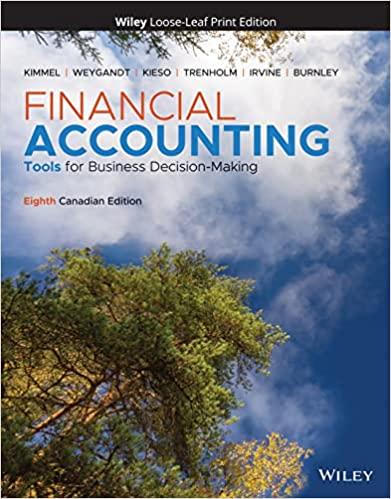Question
Hillyard Company, an office supplies specialty store, prepares its master budget on a quarterly basis. The following data have been assembled to assist in preparing
Hillyard Company, an office supplies specialty store, prepares its master budget on a quarterly basis. The following data have been assembled to assist in preparing the master budget for the first quarter:
-
As of December 31 (the end of the prior quarter), the companys general ledger showed the following account balances:
| Cash | $ | 40,000 | ||
| Accounts receivable | 200,000 | |||
| Inventory | 57,750 | |||
| Buildings and equipment (net) | 350,000 | |||
| Accounts payable | $ | 85,125 | ||
| Common stock | 500,000 | |||
| Retained earnings | 62,625 | |||
| $ | 647,750 | $ | 647,750 | |
-
Actual sales for December and budgeted sales for the next four months are as follows:
| December(actual) | $ | 250,000 |
| January | $ | 385,000 |
| February | $ | 582,000 |
| March | $ | 296,000 |
| April | $ | 193,000 |
-
Sales are 20% for cash and 80% on credit. All payments on credit sales are collected in the month following sale. The accounts receivable at December 31 are a result of December credit sales.
-
The companys gross margin is 40% of sales. (In other words, cost of goods sold is 60% of sales.)
-
Monthly expenses are budgeted as follows: salaries and wages, $15,000 per month: advertising, $55,000 per month; shipping, 5% of sales; other expenses, 3% of sales. Depreciation, including depreciation on new assets acquired during the quarter, will be $42,100 for the quarter.
-
Each months ending inventory should equal 25% of the following months cost of goods sold.
-
One-half of a months inventory purchases is paid for in the month of purchase; the other half is paid in the following month.
-
During February, the company will purchase a new copy machine for $1,000 cash. During March, other equipment will be purchased for cash at a cost of $70,000.
-
During January, the company will declare and pay $45,000 in cash dividends.
-
Management wants to maintain a minimum cash balance of $30,000. The company has an agreement with a local bank that allows the company to borrow in increments of $1,000 at the beginning of each month. The interest rate on these loans is 1% per month and for simplicity we will assume that interest is not compounded. The company would, as far as it is able, repay the loan plus accumulated interest at the end of the quarter.
Required:
Using the data above, complete the following statements and schedules for the first quarter:
1. Schedule of expected cash collections:
2-a. Merchandise purchases budget:
2-b. Schedule of expected cash disbursements for merchandise purchases:
3. Cash budget:
4. Prepare an absorption costing income statement for the quarter ending March 31.
5. Prepare a balance sheet as of March 31.





- These are the fill in the blank options
- Accounts payable
- Accounts receivable
- Advertising
- Buildings and equipment, net
- Cash
- Common stock
- Cost of goods sold
- Depreciation
- Interest expense
- Note payable
- Other expenses
- Prepaid insurance
- Rent
- Retained earnings
- Salaries and wages
- Sales
- Shipping

- These are the fill in the blank options
- Accounts payable
- Accounts receivable
- Buildings and equipment, net
- Cash
- Common stock
- Cost of goods sold
- Interest expense
- Inventory
- Note payable
- Prepaid insurance
- Retained earnings
-
Step by Step Solution
There are 3 Steps involved in it
Step: 1

Get Instant Access to Expert-Tailored Solutions
See step-by-step solutions with expert insights and AI powered tools for academic success
Step: 2

Step: 3

Ace Your Homework with AI
Get the answers you need in no time with our AI-driven, step-by-step assistance
Get Started


